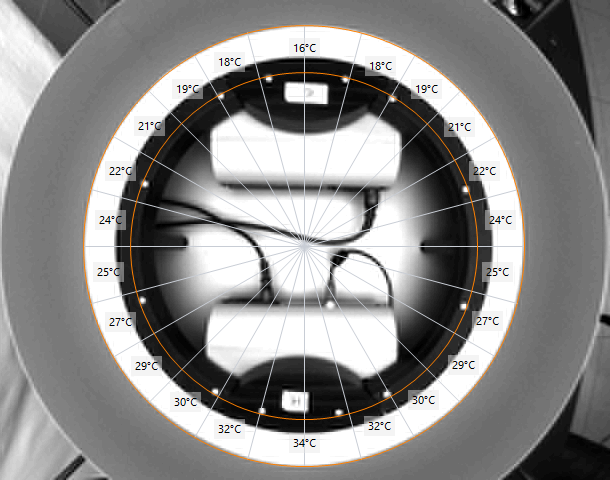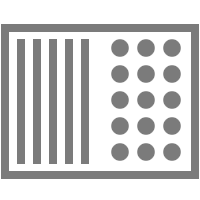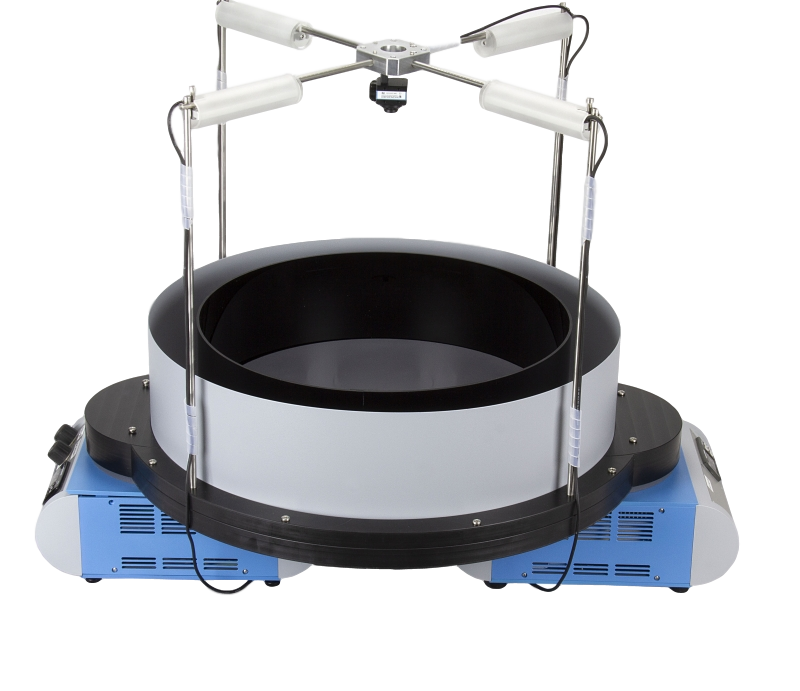- Aluminum Runway 57cm (OD) 45cm (ID) with 24cm walls
- Overall dimensions 87cm x 64cm x 64cm (H)
- Heater and heater/cooler on opposite sides, to establish a symmetric gradient
- Heating device: from room temperature to 65°C
- Heating/cooling device: from 4°C to 35°C
- Temperature feedback: 4 thermocouples embedded in the runway
- 12 zones per side, temperature of each zone measured by ANY-maze
- 4 infra-red and visible lights
- USB camera tracks the animal’s position within the ring
- ANY-maze reports 7 TGR specific measures, including:
– Preference Temperature ± SD
– Skew
– % time above a specific temperature - Measures can be reported for the entire test and across time
Thermal gradient ring
The Thermal Gradient Ring (TGR) provides an automated measurement of neuropathic pain without observer bias or interpretation. The device represents a thermal gradient assay designed as a circular running track. Animals are given a high degree of thermal choice which eliminates the potential for experimenter bias present in comparable assays. Based on its novel design freely moving animals explore a circular track divided into 12 thermal zones.
ANY-maze logically and automatically creates these zones and calculates the temperatures using embedded thermocouples. Furthermore, ANY-maze tracks the animal’s movement within the ring via a USB camera (supplied). The unique circular design guarantees no border effects and no spatial cues. Additionally, exploratory behaviour is easily discerned from thermal selection behaviour and provides increased accuracy by providing measured values in duplicate and by removing edge artefacts.
TGR is ideal for recording and analysis of Comprehensive Thermal Preference Phenotyping in Mice as described in Zimmermann’s method.
Details

Publications
Valek L. et al. (2021) Prodromal sensory neuropathy in Pink1−/−SNCAA53T double mutant Parkinson mice. Neuropathol Appl Neurobiol. 2021;00:1–20. https://doi.org/10.1111/nan.12734

 Setting up apparatus
Setting up apparatus Video capture & tracking
Video capture & tracking Observing behaviour
Observing behaviour Connecting equipment
Connecting equipment Automating complex tests
Automating complex tests Running tests
Running tests Results
Results Visualising data
Visualising data Analysis
Analysis Transferring data
Transferring data Open field
Open field Water-maze
Water-maze Y-maze
Y-maze Fear conditioning
Fear conditioning Novel object
Novel object Barnes maze
Barnes maze Radial arm maze
Radial arm maze Forced swim test
Forced swim test Light/dark box
Light/dark box Operant conditioning
Operant conditioning Zebrafish
Zebrafish Computers
Computers Accessories
Accessories Digital interface
Digital interface Optogenetic interface
Optogenetic interface Synchronisation interface
Synchronisation interface Relay interface
Relay interface Audio interface
Audio interface Touch interface
Touch interface Analogue interface
Analogue interface USB TTL cable
USB TTL cable Animal shocker
Animal shocker Components
Components Place preference
Place preference ANY-box
ANY-box T-maze
T-maze Zero maze
Zero maze Hole board
Hole board Sociability cage
Sociability cage Tail suspension
Tail suspension OPAD
OPAD Parallel rod test
Parallel rod test RAPC
RAPC Thermal gradient ring
Thermal gradient ring Operon
Operon Activity Wheel
Activity Wheel Full ANY-maze licence
Full ANY-maze licence Other licence types
Other licence types Developing countries licence
Developing countries licence Contact support
Contact support Support Policy
Support Policy FAQs
FAQs Guides
Guides Downloads
Downloads Send us files
Send us files Activate a licence ID
Activate a licence ID Contact us
Contact us Blog
Blog About
About Testimonials
Testimonials Privacy Policy
Privacy Policy
